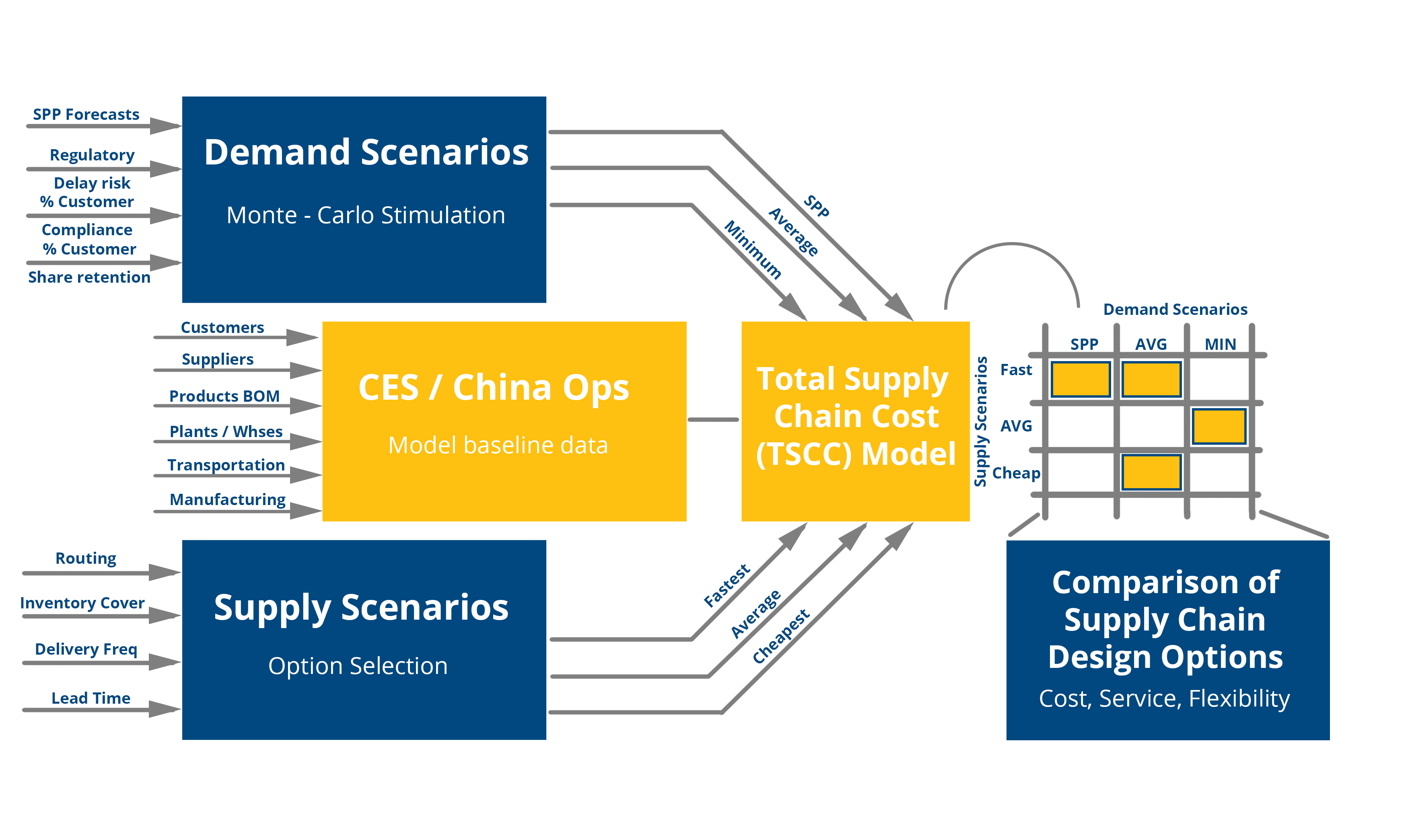Developed end-to-end supply chain costing to design an optimal network to support new product introduction in China
Key Business Challenges
- With continued uncertainty surrounding the adoption of new emission standards, the client did not want to invest capital given the uncertain market dynamics in China
- Client was unsure as to the level of service expected by its customers and the level of service offered by its competitors
- Client required a cost-to-serve model that is capable of processing multiple scenarios per customer
Client Expectations
- Built a Monte Carlo Simulation Model to balance the risk/reward surrounding the market potential with that of the regulation uncertainty
- Improved working capital by increasing payment terms by 30%, increased supplier-owned inventory
Developed PAC strategy to for delayed product differentiation
Analytics/Consulting Project
- Conducted customer research for client to help them understand the China market and their customer expectations
- Developed customer segmentation and simulated various demand scenarios for sensitivity analysis
- Built detailed process definitions to evaluate current capabilities for end-to-end planning and identified process gaps
- Market research enabled the construction of a segmentation strategy for the client and provided a competitive market assessment on clients capabilities versus the competition
- Develop a financial model that take into account cost, flexibility, and responsiveness while managing risk of over and under investment
Monte-Carlo simulation of demand risks indicated likely loss of 30%-90%
SUMPURA Delivered Outcomes
- Developed a detailed cost to serve model, that is capable of conducting multiple scenario analysis
- Recommended the construction of an alternative manufacturing strategy to shorten lead-time to the customer that satisfies customer expectations
- Assessed current supply chain planning process and suggested improvements to S&OP process
- Developed an implementation plan to roll out supply chain with highest flexibility to minimize capital risks
Redesigned supply chain to reduce costs (~4% COGS to 2%)
